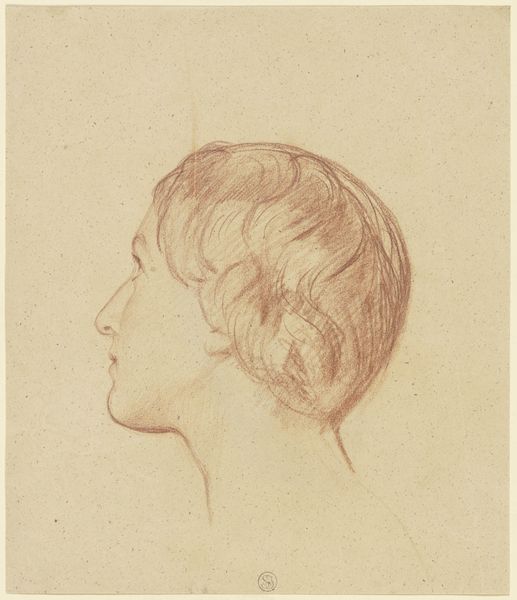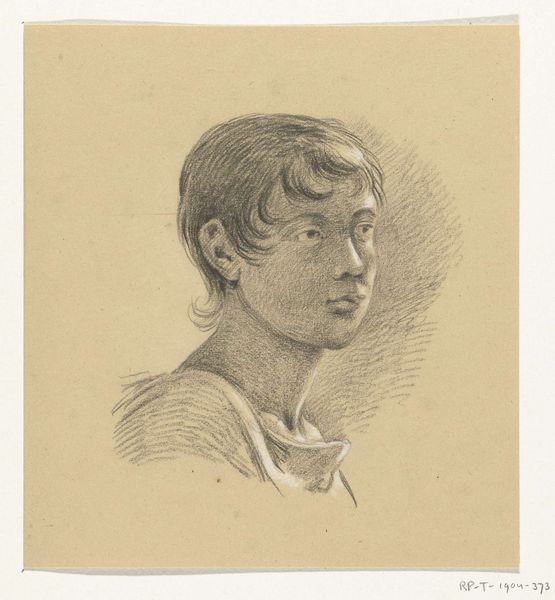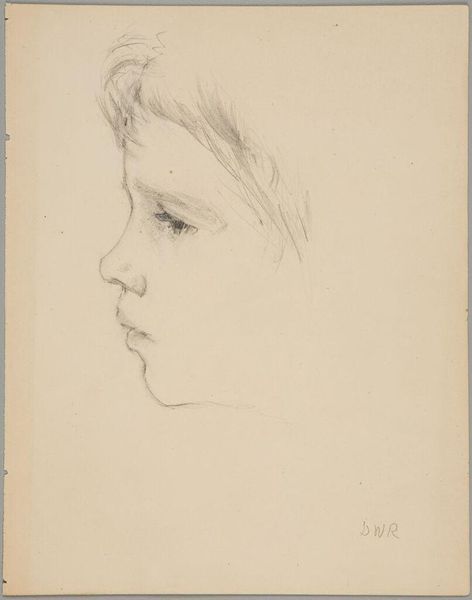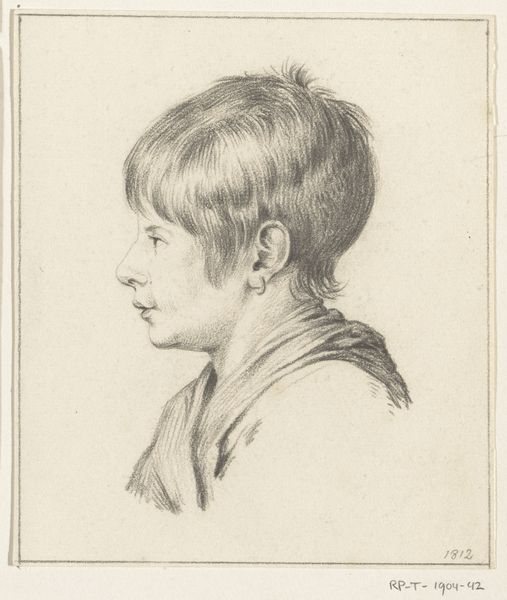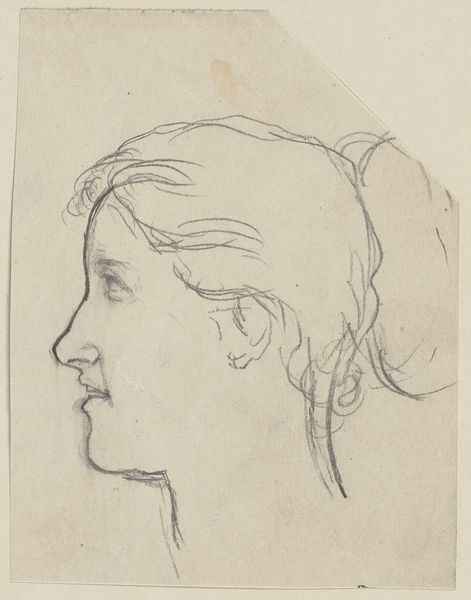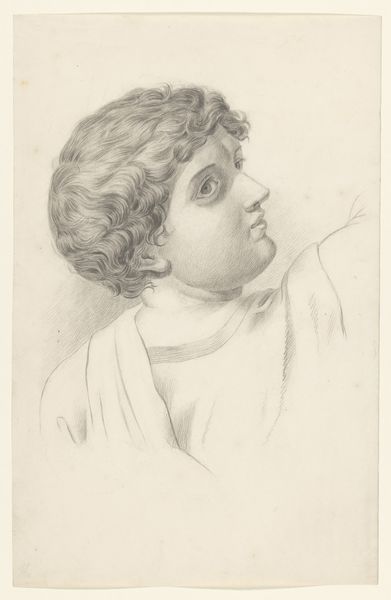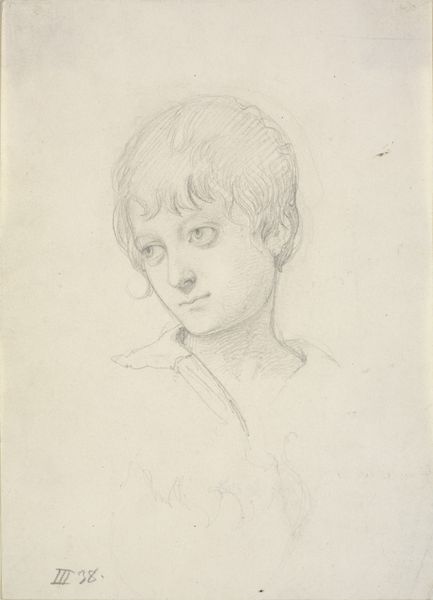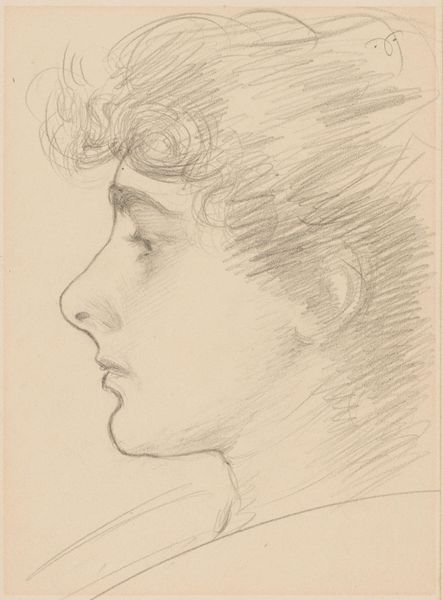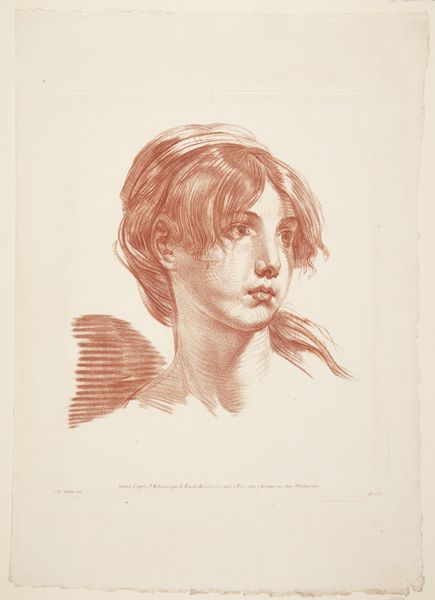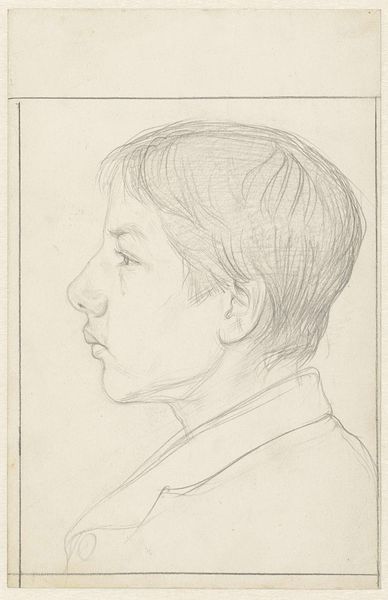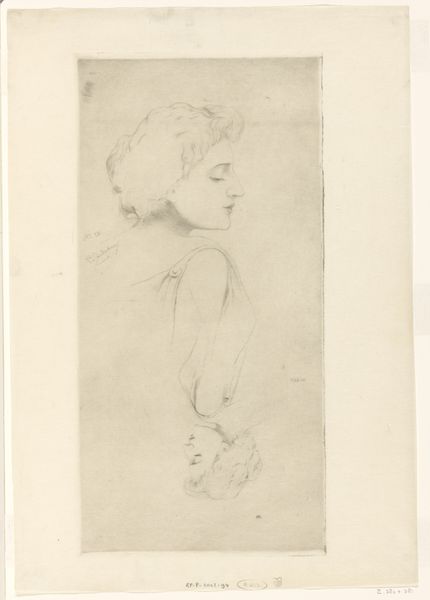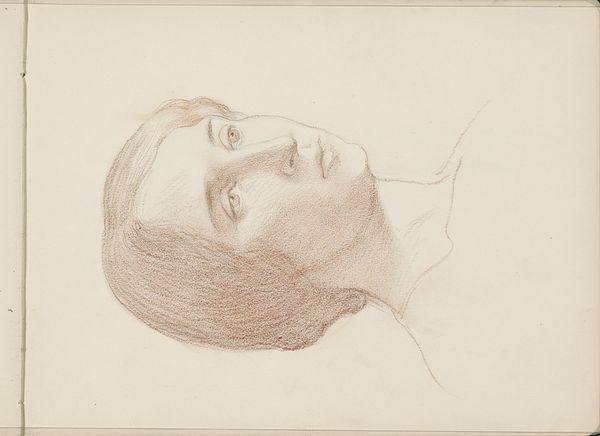
drawing, pencil
#
portrait
#
pencil drawn
#
drawing
#
caricature
#
pencil drawing
#
pencil
#
portrait drawing
#
realism
Dimensions: height 335 mm, width 208 mm
Copyright: Rijks Museum: Open Domain
Editor: We’re looking at Frederik Hendrik Weissenbruch's "Jongenshoofd, naar links", or "Boy's Head, facing left," a pencil drawing made sometime between 1838 and 1887. It's currently housed in the Rijksmuseum. I’m immediately struck by the intimacy of this work – the casual sketch-like quality makes it feel like a quick glimpse of a real boy. What can you tell me about its cultural relevance? Curator: This work provides a window into 19th-century Dutch society, especially concerning portraiture’s function. It makes you consider: for whom were these portraits made? Was this drawing a study for a larger, perhaps commissioned work? Editor: That's a great question. It definitely has the feel of a preliminary sketch, more of a study of a face than a formal portrait. Curator: Precisely. Drawings like these challenge our perception of portraiture in art institutions like the Rijksmuseum. Often, we emphasize finished oil paintings, neglecting these less formal, yet revealing works. Considering this was made during a period of significant social and political change in the Netherlands, the relative informality is quite telling. Editor: So, this piece, by being seemingly "unfinished", highlights how art production itself was changing at the time? The move toward a more "Realist" representation and less staged portraits? Curator: Exactly! Think about how Realism began influencing art, favoring depictions of everyday life over idealized historical or mythological scenes. A sketch like this could be interpreted as a democratizing impulse – an accessibility that contrasted with the grandiosity of academic painting. This drawing quietly speaks to shifts in artistic practice, subject matter, and the broader cultural landscape. What does this democratization mean for how museums display art? Editor: Wow, I never would have considered all of that just by looking at the image! I am interested to see how institutions can work toward a display that can engage viewers on all these different aspects, making us see that art exists beyond museums too! Curator: Precisely, art has always played a powerful role beyond the canvas.
Comments
No comments
Be the first to comment and join the conversation on the ultimate creative platform.
